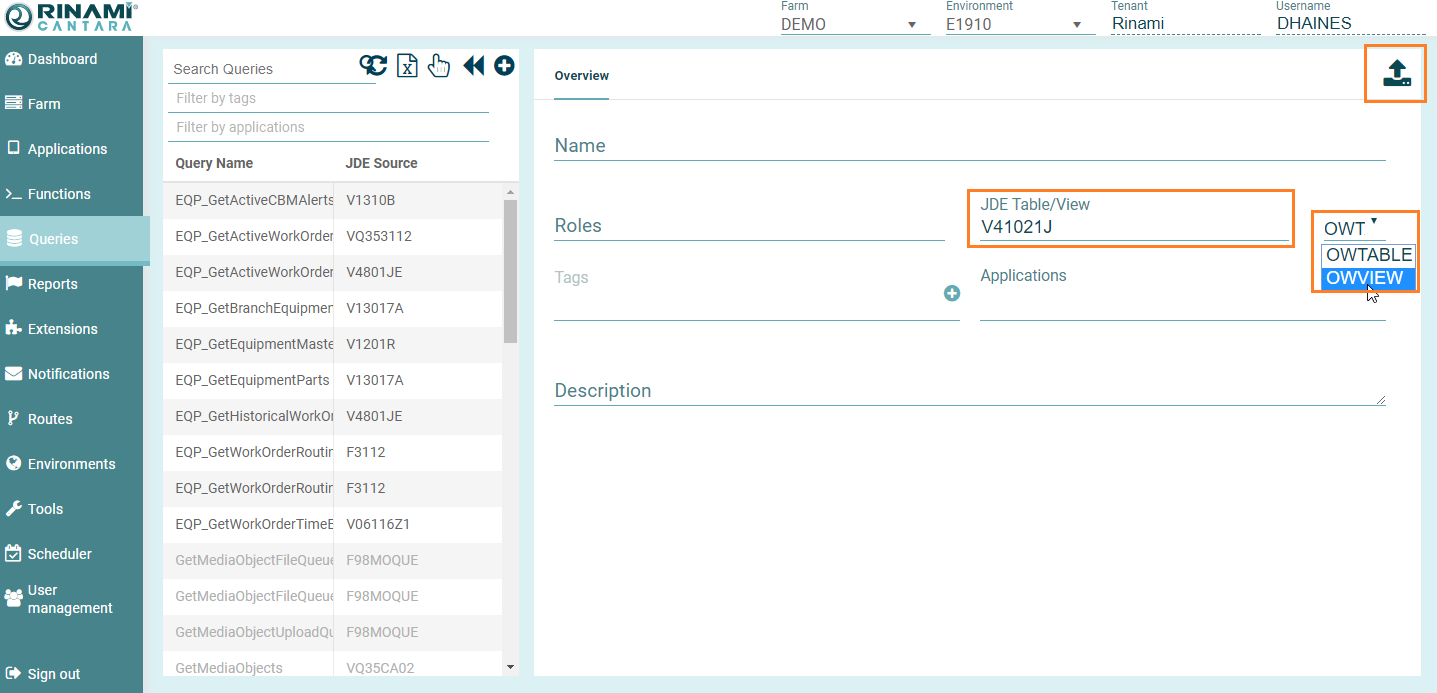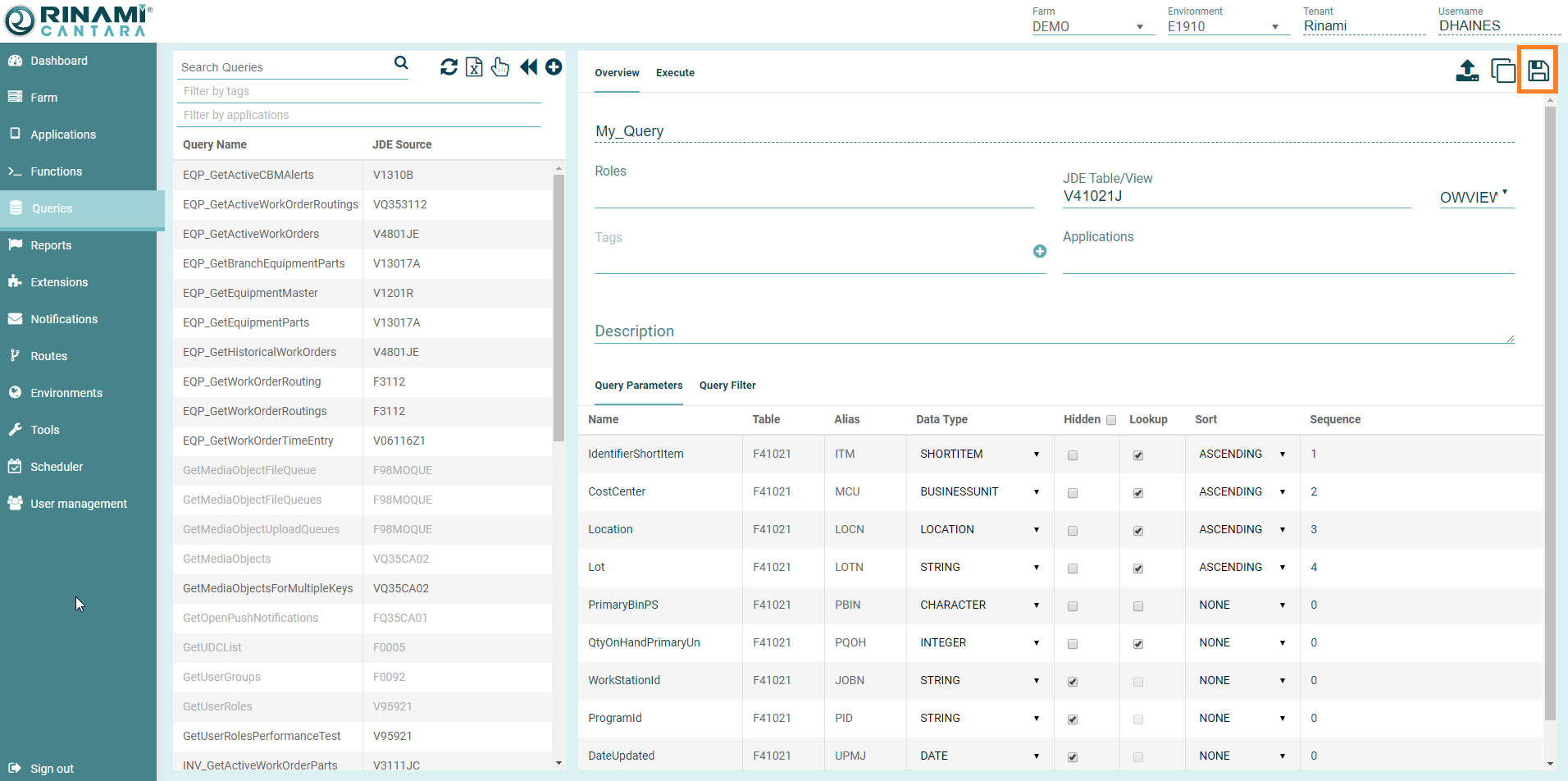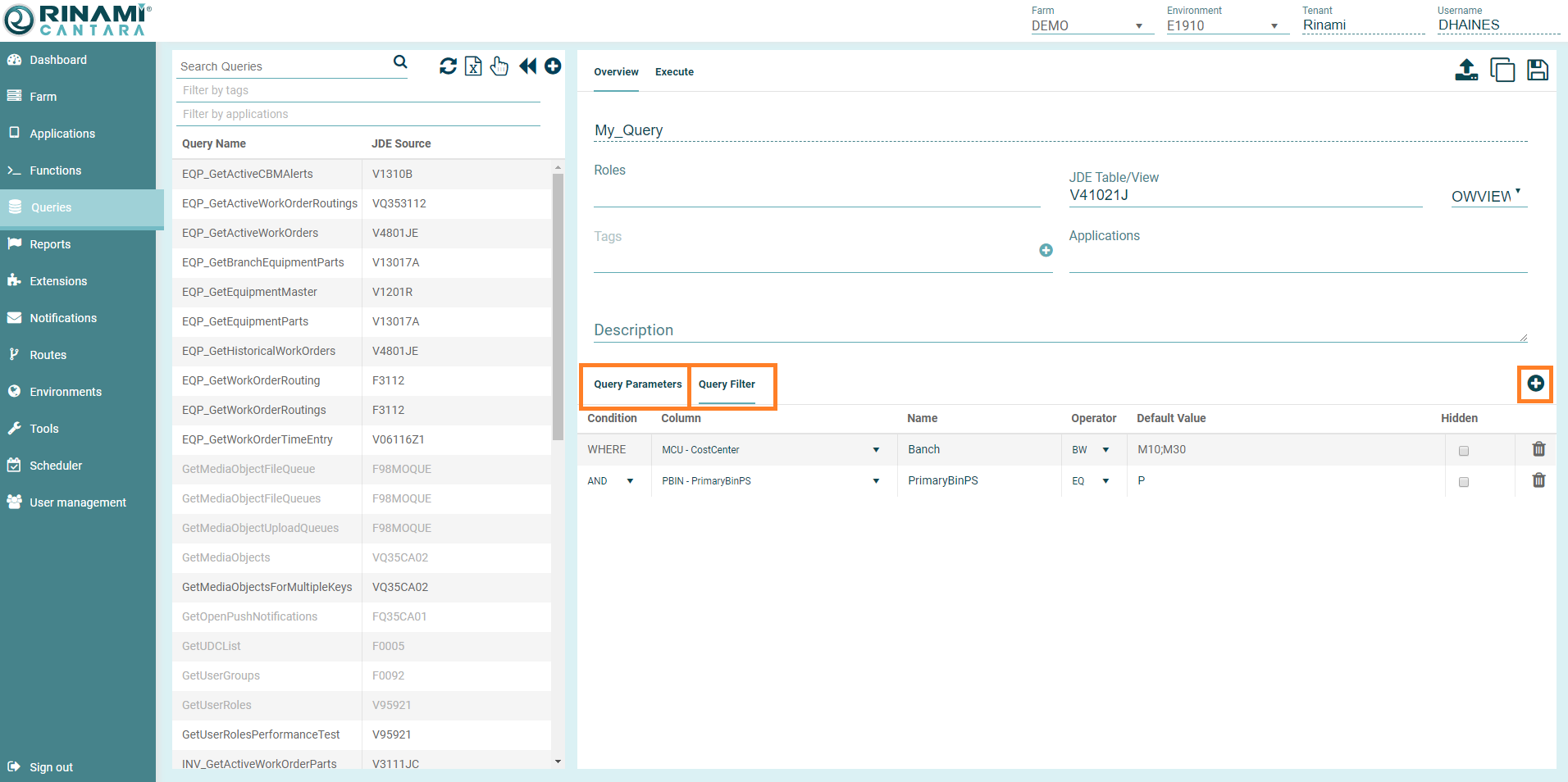Creating and Defining a Query
Query definitions you create are linked to tables or business views on the JD Edwards server. Once you create a query, you can load it to view and modify (where applicable) its data structure.
Note
Cantara adheres to the JD Edwards security model when using the XML List Kernel to access data. The content that is displayed for tables, views, and queries is based on your security level in JD Edwards.
Creating a Query
The procedure in this section shows you how to create a query.
To create a query service
- Select the Queries node in the navigation panel.
- Click the Add button in the top right.

- Enter the JDE Table/View.
- Select the type (Table or View) from the drop-down list. If this is incorrect the query will fail to load.
- Click the Load Template button in the top right to display the query fields. If prompted, enter your JD Edwards log in credentials.

- Enter a Name for the query that will be used to make the system calls. The value for this field can be a maximum of 40 characters (no spaces). Valid characters include numbers, letters, dash and underscore.
- You can choose to enter a Description for the function for future reference.
- You can add Tags to your function to assist with management of component defintions. You can select from the existing tags or add a new tag by pressing the Add + button, typing the name, then pressing Save.
You can also select the Roles that are permitted to execute this service.
Note
Note this applies to Row security only (Type 4)
Role security is not applied when queries, functions, reports are executed via the console.- Each query column can be modified to suit your specific requirements. Please see Defining a Query for futher details.
- You can add filter fields to limit the number of records selected. Please see Adding a Filter for further details.
- Click the Save button in the top right. The query definition is saved and is added to the list of queries in the navigation panel.

If you need to create multiple queries definitions for the same JD Edwards table or business view, press the Duplicate Query button 
Enter a name for the new query and press the Save button. Repeat this process for each additional definition you wish to add.
Defining a Query
The following table lists the parameters for a selected table or JD Edwards view.
| Field | Description |
|---|---|
| Name | The name you want to assign to the column. By default, the system populates this field with the JDE Name. You can change the value to one that is more meaningful to you. The value for this field can be a maximum of 40 characters (no spaces). Valid characters include numbers, letters, and a dash (-). |
| Table | The name of the table that the column is in. |
| Alias | The JD Edwards alias for the field. |
| Data Type | Data type for the parameter. The Cantara Access Server can determine the basic data types such as STRING, CHARACTER, and DATE, but is not able to automatically determine if the field is a complex data type such as ADDRESSNUMBER or BUSINESSUNIT unless it has been defined in the defaults definition file on the server. You can manually set these values to make sure the data sent to or returned from JD Edwards is handled correctly and to enable the advanced lookup functionality. Refer to the Definition Data Types table for details about each of the data types. |
| Hidden | Checkbox to specify whether you want the table column to be displayed or hidden. |
| Lookup | If selected, the system will execute the advanced lookup functionality for the data type specified. Refer to the Definition Data Types table for specific details about the lookup functionality of each of the data types. |
| Sort | Specifies sort order: NONE, ASCENDING, DESCENDING. |
| Sequence | Specifies the ranking of the sort. |
Adding a Filter
The Filter section of the query screen allows you to specify the rows you want the query to return.
To add a filter
- Switch to the Query Filter page.

- Click the + Add Filter button.
- Define the filter:
- Condition - The criteria to apply on the filter: WHERE, AND, OR.
- Column - The field to filter against.
- Name - The name of the column as specified.
- Operator - Equal (EQ), Not Equal (NE), Greater Than (GT), Less Than (LT), Less or Equal (LE), Greater or Equal (GE), In (IN), Not In (NI), Between (BW), and Not Between (NB).
Default Value - You can set default values for query criteria. For hidden fields only the default value will be submitted.
- Hidden - Checkbox to specify whether you want the filter line item to be available to be submitted in the service call. Note: Click the area to activate the checkbox.
- If necessary, you can build the filter to contain multiple conditions. For example, after the first WHERE condition, you could use an AND or OR condition for more specific results.
- If you need to delete a specific filter line, click the Trash can icon to the right of the line you wish to delete. The criteria is immediately removed.
On This Page
